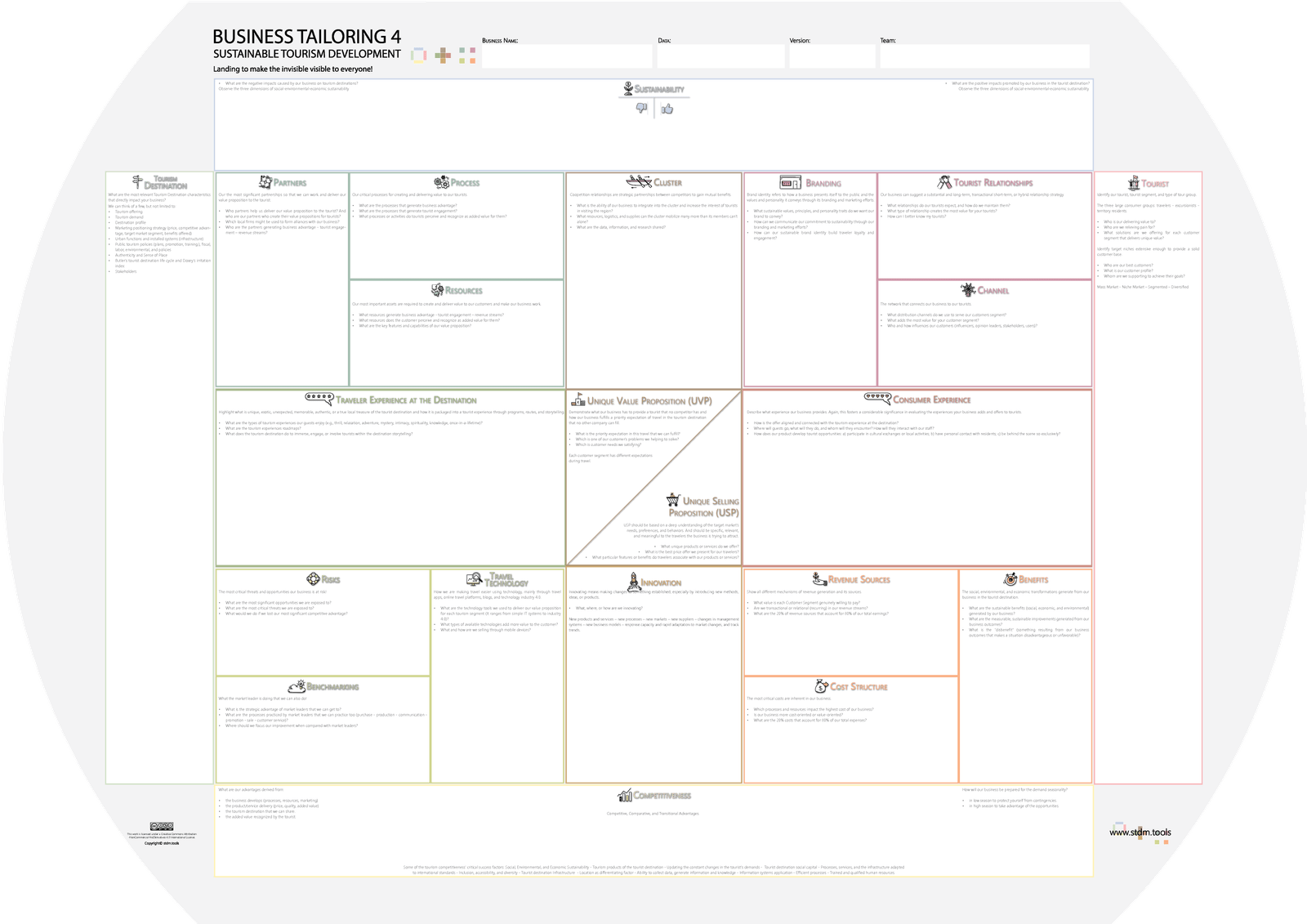The 3 optimal analysis levels for Sustainable Tourism Development Management
is applied to Small and Medium Tourism Enterprises (SMTEs) to tailor their business.
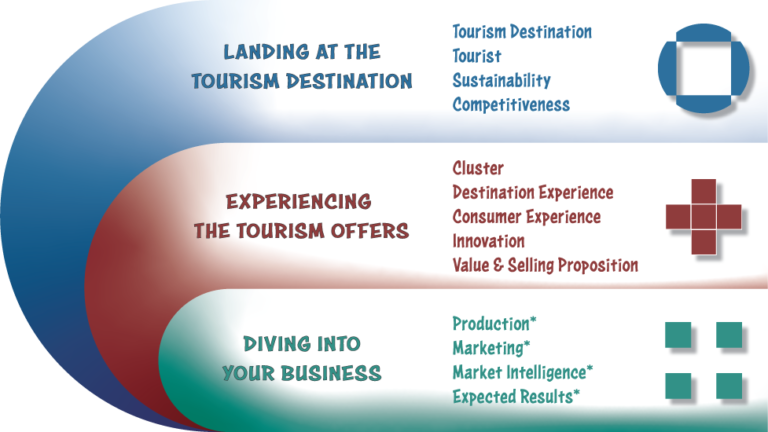
The 3 analysis levels for STDM are continuous and circular. Analyze the business on three levels, getting to know the tourist destination, the tourist experience, and your business. Get your business team together and conduct continuous rounds of this analysis. In each round, you will connect new ideas and information and discover something new until a reference version is produced for the moment.
Landing at the tourism destination
The three optimal analysis levels for STDM should start with a strategic overview of the four essential elements for sustainable tourism development.
What Does the Business need to know about each one?
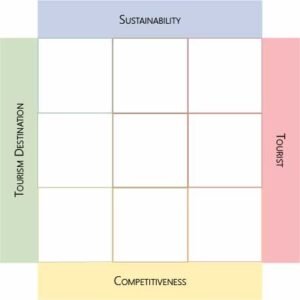
The business components of the Landing at the tourism destination level are:
The most beneficial knowledge is that of the destination. Therefore, it’s necessary to be informed about its market size, strengths and weaknesses, the critical success factors of the destination, and the competitive, comparative, and transactional advantages. Additionally, one must be able to identify hidden business opportunities and create or develop unexplored niches.
What are the process partners, resource providers, logistics, and distribution channels, communication channels on the destination with which we can form alliances or explore new markets? Always maximizing the use of the destination’s resources and reducing losses.
Recognizing that a small tourism business operates within a given destination is essential. With this understanding, we can distinguish three large groups of initial consumers: travelers, excursionists, and the local community that resides in the territory.
From there, it is essential to segment the market to understand its consumers’ similarities better. These groups of people have the same goals and pains and thus outline more efficient marketing strategies targeting niches extensive enough to provide a solid customer base.
Sustainable businesses must consider the needs of travelers, the sector, and the hosting community, along with our own needs. In addition, we must consider the environmental, economic, and sociocultural impacts we are promoting to maximize the positives and minimize the negatives.
Sustainability adds value to the business when: it optimizes the usage of resources while minimizing losses, attracts travelers with a specific interest in sustainable products and services, increases the business life cycle, serves as a competitive and comparative differentiator, enriches the traveler’s experience with the knowledge that they are financing a responsible business, among many others.
As social pressure mounts and more tourists demand sustainable products and services, companies that take up the sustainability challenge will reap additional benefits.
Tourism can only be sustainable if it is competitive. Otherwise, sustainable businesses and destinations will fail. Similarly, tourism can only be competitive if it is sustainable. This condition will cause the company’s revenue growth and customer satisfaction to increase.
It must be informed about its competitive, comparative, and transitory advantages.
Experiencing the tourism offers
Following the three optimal analysis levels for STDM, we must analyze the tourism experience offered to the niche tourist, the destination, and the business.
What Does the Business need to know about each one?
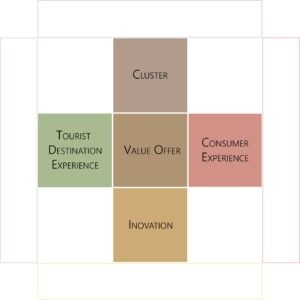
The business components of the Experiencing the Tourism Offer level are:
Cluster has a potential to foster collaboration among businesses, organizations, and local stakeholders within a specific geographical area. By pooling resources, expertise, and innovative thinking, these clusters create a dynamic and sustainable ecosystem that enhances the overall tourist experience. This collaborative approach drives competitiveness, promotes responsible practices, and contributes to the continuous improvement of products and services, ultimately ensuring the long-term success and appeal of the tourism destination.
Tourism destinations must offer authentic tourist experiences. The most significant authenticity factors are faithfulness to our vocation, landscape, gastronomy, customs, architecture, music, dance, crafts, and more. They should stand out for their uniqueness and environmental and sociocultural diversity. This means that some businesses may not be of interest to the tourism destination long term, especially from an environmental, social, cultural, or economic perspective. Every tourism destination must offer an exclusive tourist experience with storytelling. Businesses must be part of this context.
In addition to consuming products and services, the traveler seeks to live unique experiences (that produce physical, personal, emotional, spiritual, intellectual, and learning sensations). The traveler hopes to obtain the main benefit during his trip is lifelong memories. This fosters a considerable significance in evaluating the experiences our business adds and offers to the traveler.
The value proposition is the set of advantages the business offers travelers. The value proposition determines how travelers distinguish our brand from competitors and whether it will be selected over the competition. It solves a problem and satisfies the needs of travelers. With the value proposition, your business will increase profit and traveler loyalty while simultaneously attracting and converting more travelers.
The constant development of new tourism products and services poses a challenge that affects the survival of most businesses and tourism destinations. As global competition intensifies, innovative activity encourages organizations to take more risks and quickly incorporate market changes into our business practices. This happens through the creation or adoption of new ideas, which improve businesses’ performance and offer a competitive advantage that ultimately promotes the tourist activity’s sustainability.
Diving into your business
To conclude the first round of the 3 optimal analysis levels for STDM, we must analyze the main critical success factors according to the areas of business knowledge and their respective subdivisions.
What does the business need to know about each one?
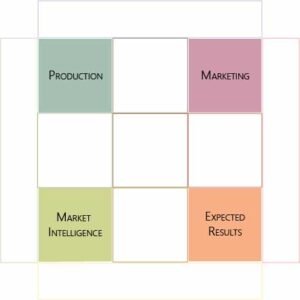
The business components of the Diving Into Business level are:
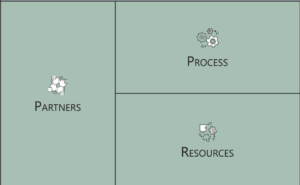
Production is the central point of any tourism business. Production refers to the set of resources, processes, and partnerships that aim to produce the tourism product or service. Therefore, identifying which of the businesses’ main production factors will be offered within the traveler destination (such as selecting the key partners, key processes, and critical resources) is vital.
The primary partnerships describe the supplier network and other types of business-for-business partnerships. Here we can identify some of the critical points of the business, which reveal both the opportunities and threats the business is exposed to.
Key Processes refer to the processes, activities, and actions that are substantial to a business’s successful operation. Key processes are crucial to creating and delivering the value proposition, ensuring customer satisfaction, and generating more profit.
Essential Resources are the resources most important to producing your product or service. It is necessary to identify which resources fall under this title because of their heavy influence on the business’s general development. They can be physical, intellectual, human, financial, or cultural.
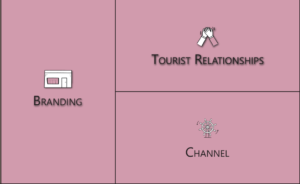
The marketing of tourism destinations and businesses drives today’s highly competitive globalized tourism scenario. Tourism marketing aims to promote the business, distinguish it from competitors, build brand recognition, and attract and retain travelers. In addition, tourism marketing focuses on finding unique markets and promoting them either for a single business or the entire tourism destination. Thus, it is necessary to know the best channels and their relationship with the traveler and a traveler cluster (when it exists).
Branding in the tourism industry is the ability to effectively communicate a company’s unique offerings, values and experiences to potential customers. A strong and cohesive brand identity differentiates a company from its competitors, creates an emotional connection with the target audience, and shapes their perceptions and expectations of the products and services offered. Ultimately, successful business branding leads to increased customer loyalty, higher conversion rates, and long-term growth and sustainability for the business in the competitive tourism landscape.
When considering contact with the traveler, we must also consider the type of relationship the business desires with each traveler segment. It’s necessary to define the objective of each phase of the relationship with each specific customer segment. The relationship with the traveler will directly influence the traveler’s consumer experience.
The communication, distribution, and sales channels form a set of contact points between the business and the traveler. This contact with the traveler is fundamental to promoting the best consumption experience they can receive. Therefore, it is necessary to identify at which point in the trip’s duration the channels interact with the traveler and the characteristics of this interaction.
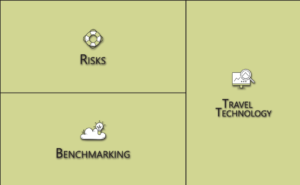
Through market intelligence, tourism companies can organize data, transform it into relevant information that assists decision-making, comprehensively understand the traveler’s behavior, guide the attraction’s promotion, segment demand into niches, and suit market expectations and trends. We must analyze the risks, carry out benchmarking, and utilize available technological systems to accomplish these feats.
Analyzing risks is to discern and eliminate the main threats and opportunities that can negatively impact your business activities and the tourism destination. Once identified and analyzed, the expected value from this analysis should compose the business’s cost structure.
Identifying the actions of leading organizations in our segments within and outside the tourism market is essential. With this, we must analyze the performance and quality of our value proposition, using these leaders’ processes, products, and services as a point of reference. Furthermore, it’s necessary to map and incorporate the best resources, practices, trends, and innovations into the business strategy to remain competitive in the tourism market.
Identifying which information systems amplify the experience promoted by the destination, travelers’ experiences, and competitiveness is essential. Every tourism business must be updated with established travel technologies because travelers recognize them as added value; if your business is not, your competitor will be.
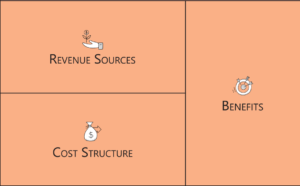
The expected result from the activity represents financial forecasts, encourages stakeholders’ engagement, and generates expectations about the sociocultural, environmental, and economic impacts caused by the tourism destination and the welcoming community. In addition, the expected results work as a basis to guide managers.
It’s time to consider the revenue sources the business generates from each traveler segment. But first, we must identify how the organization creates revenue and pricing its value proposition on each traveler segment.
In this unit, we must allocate the business cost structure, with the most substantial costs being able to follow the Pareto 80/20 principle. The cost structure can be easily defined by analyzing the resources, partnerships, processes, relationship model with travelers, the channels used, the production routine, the technologies involved, and the responses to risks.
It is time to identify the changes in the traveler destination promoted by activity, observing the three pillars of sustainable development (social, environmental, and economic). Then, evaluate the improvement achieved as a result of our action and which stakeholders recognize this impact as an advantage.
Now you know the 3 optimal levels of analysis for STDM, get to know the tool and download it for free.
Download the free files
Download the Business Tailoring 4 Sustainable Tourism Development and the Questions Guide for FREE below. The tool is free because I believe Sustainable Tourism Development should be within most small communities' reach and their small business.
Upon downloading, you will receive a zip file containing the tool in three formats:
- The guiding questions reveal the relationship between the tourism destination, the traveler, and your business.
- In PowerPoint, you can use a projector to launch it on the office wall or a big screen to share and fill it out with your team.
- In pdf., you can print (A-0 size), hang on the wall, get ideas about your business, and fill in using post-it notes.
- A simple image sizing A-4.

